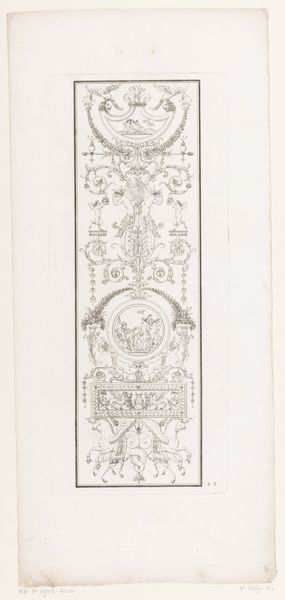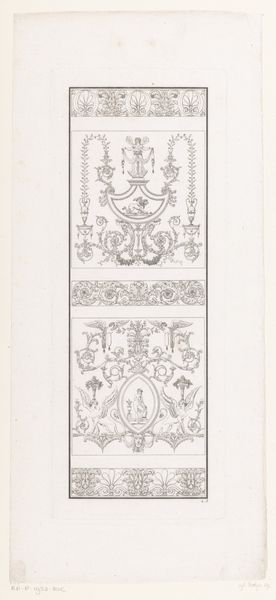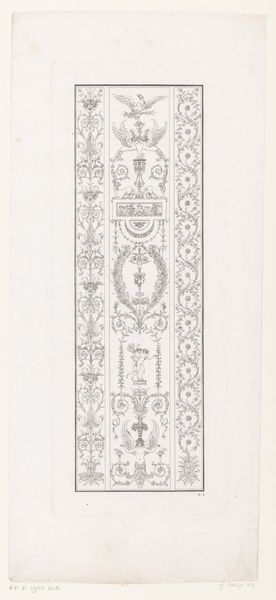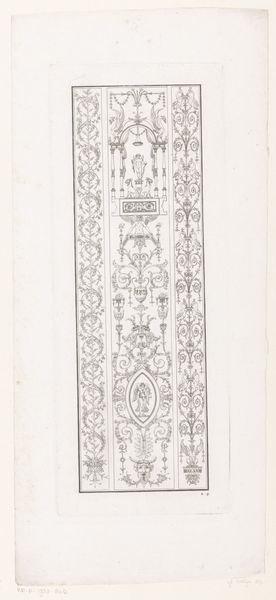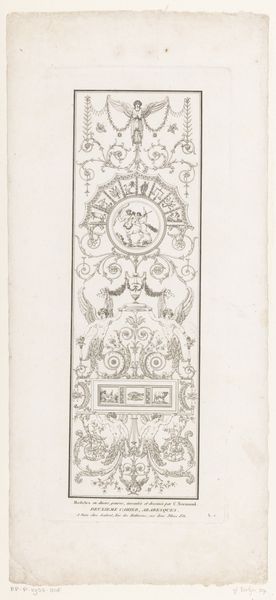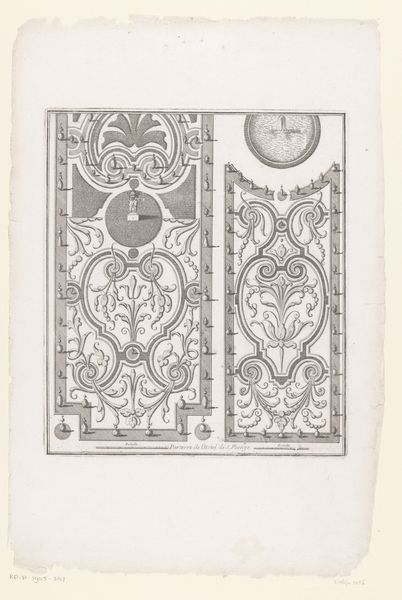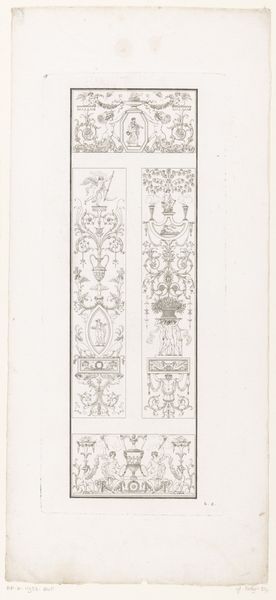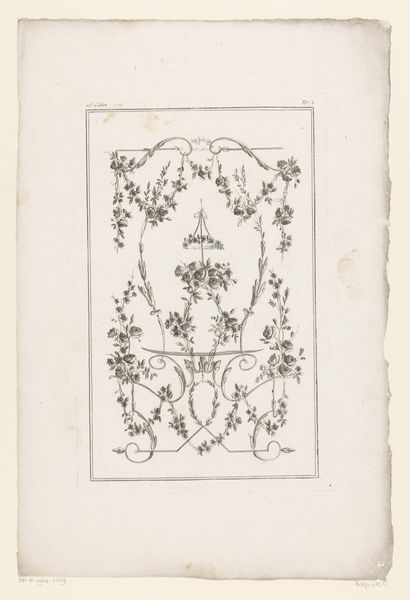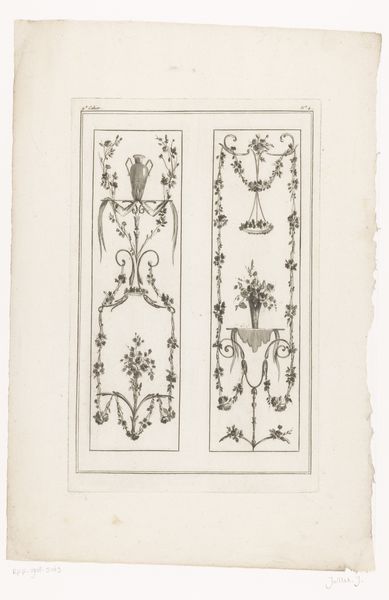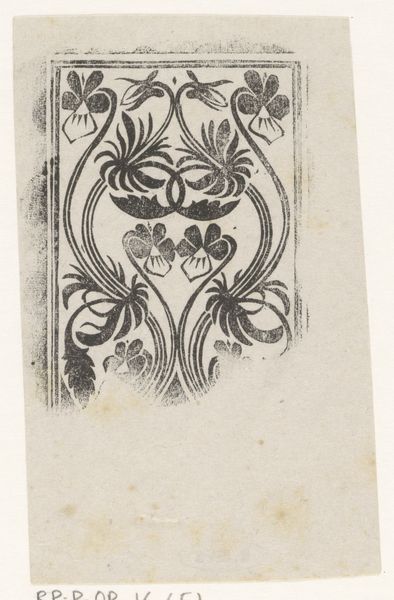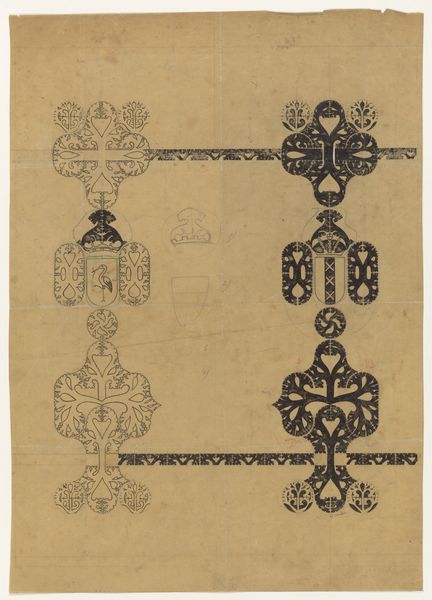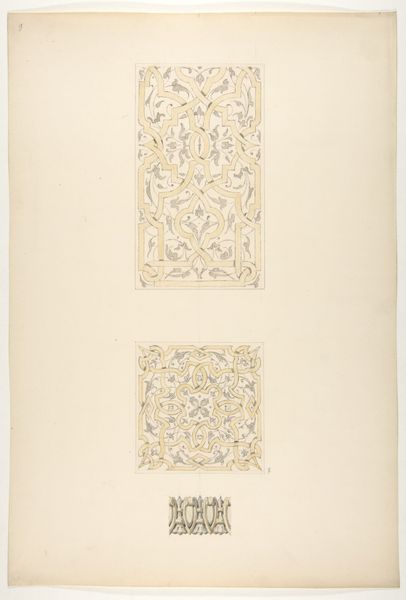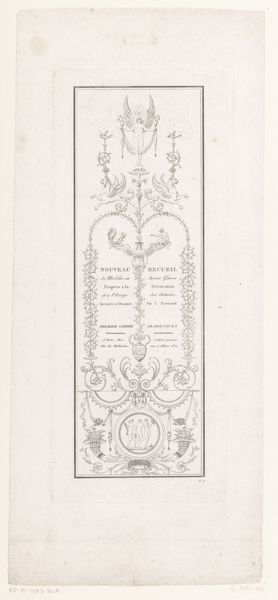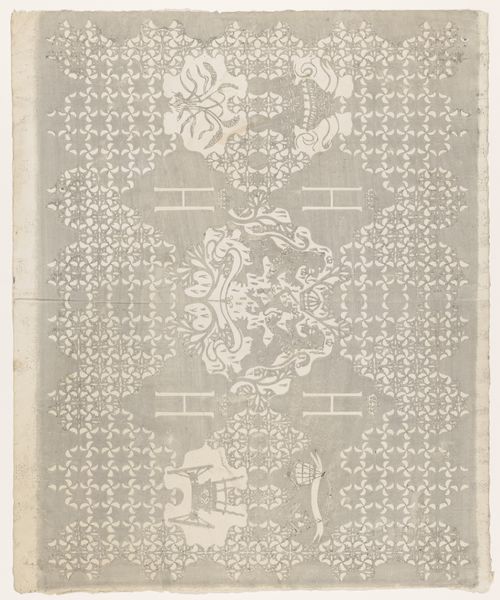
drawing, graphic-art, print, paper, engraving
#
drawing
#
graphic-art
#
neoclacissism
#
ink paper printed
# print
#
old engraving style
#
paper
#
form
#
geometric
#
line
#
engraving
Dimensions: height 335 mm, width 142 mm
Copyright: Rijks Museum: Open Domain
Curator: This fine engraving from 1803 is titled "Drie panelen met arabesken" or "Three Panels with Arabesques", by Charles Pierre Joseph Normand. The artwork consists of vertically stacked decorative panels in detailed linear patterns. What’s your initial impression? Editor: Stark elegance, a sort of disciplined fantasy. The controlled lines and symmetry evoke a sense of order, but the swirling plant forms hint at hidden exuberance and, in turn, a certain era of excess, even of colonialism with the idea of appropriation of patterns. Curator: Indeed. It encapsulates Neoclassical ideals prevalent at the time—symmetry, order, and a revival of classical forms—reflecting the political and cultural climate yearning for stability after revolution. Each panel presents unique arrangements, and some incorporate classical motifs that evoke narratives of power and virtue. Editor: Precisely, there's a calculated restraint. While beautiful, this aesthetic was accessible mostly to a particular segment of the population, usually wealthy white patrons. Do you think that its order imposed ideas that erased those beyond a strict socio-political norm? Curator: Symbols operate in complex ways; the patterns normalize the era's ideals of the aristocracy while simultaneously obscuring labor exploitation via sugar and tobacco plantations. Editor: Right, the so-called Age of Enlightenment, underpinned by economic inequality and obscured under these very deliberate and precious designs, a constant contradiction. I’m interested in the contrast. How did people interact with this during the era? Curator: Such prints were likely used as source material by artisans and architects, shaping the visual culture and reaffirming prevailing power structures of the time. It illustrates the social control exerted through seemingly innocuous designs. Editor: Absolutely. Art, in all its forms, whether consciously or unconsciously, reinforces prevalent power structures. Examining this artwork offers critical reflection to understand historical biases that can influence present aesthetics. Curator: I concur, and tracing how symbols transmute over time remains deeply compelling. Editor: Indeed. The lasting dialogue between art history and socio-political awareness is an important space for new approaches.
Comments
No comments
Be the first to comment and join the conversation on the ultimate creative platform.
